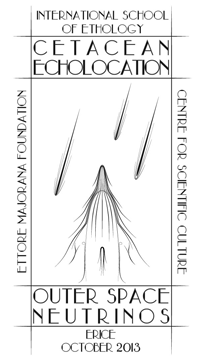Speaker
Francesco Simeone
(INFN Roma, I)
Description
In recent years the astro-particle community is involved in the realization of experimental apparatuses for the detection of high energy neutrinos, originated in cosmic sources or produced in the interaction of cosmic rays with the cosmic microwave background. For neutrino energies in the TeV-PeV range, the underwater optical Cherenkov technique is considered as optimal.
For higher energies, the detection of acoustic waves, originated by neutrino interactions in acoustically transparent mediums, is under study.
Cherenkov detectors measure the visible photons originated by charged particles, produced in the neutrino interaction and propagating at velocities greater than the speed of light through a transparent medium. This kind of detectors consists of array of photomultipliers in a volume of several km3; this topology requires the ability to acquire physics information in different places of the detector and correlate them, using the occurrence time, with a sub-ns precision. The km3net-italia collaboration has successfully deployed a prototype tower of a Cherenkov detector at a depth of about 3000 m in the Capo Passero site, 100 km off the Sicily coast, on march of 2013. The underwater detector sample signals from photomultipliers and hydrophones, acquire slow-control data, both from oceanographic instruments and dedicated sensors, and send the whole data to the laboratory through a fully bi-directional fiber optic link, providing a real-time data transport layer, synchronous and phased with the GPS clock, between the onshore laboratory and the underwater detector. The SMO collaboration has contributed to design, build and integrate, 14 large bandwidth hydrophones, for multi-disciplinary use, onboard the NEMO detector. This detector will be used to perform long term and real-time monitoring of sounds and environmental parameters, identification and full tracking of cetaceans and to test neutrino acoustic detection techniques. An overview of the NEMO-SMO experiment will be given and its first results will be summarized.

